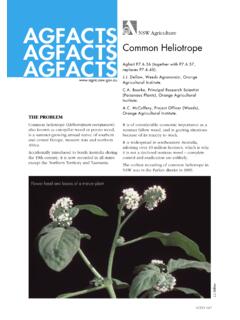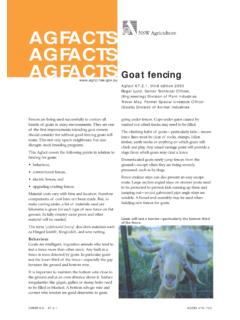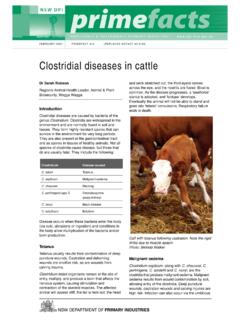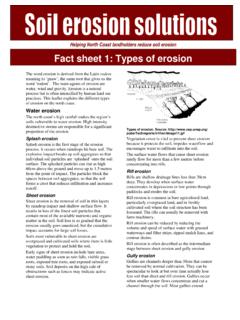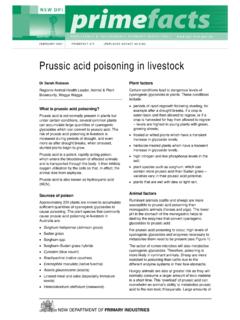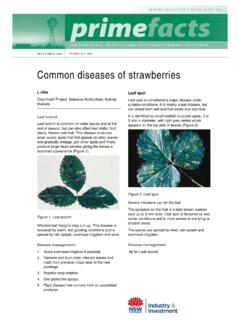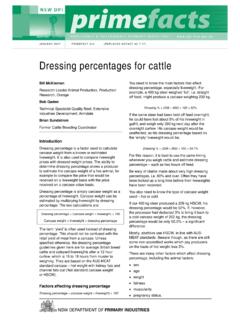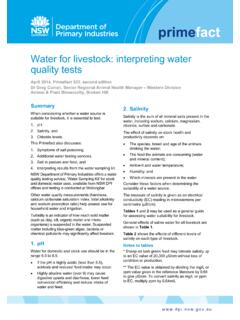Transcription of Identifying sharks and rays - A guide for commercial fishers
1 NSW DPIA guide for NSW commercial fishersIdentifying sharks and rays2 ImportantIf a shark or ray cannot be confidently identified using this guide , it is recommended that either digital images are obtained or the specimen is preserved. Please contact NSW DPI research staff for assistance: phone 1300 550 474 or email 4 How to use this guide 5 Glossary 6-7 Key 1 Whaler sharks and other sharks of similar appearance 8-9 to whalers upper precaudal pit presentKey 2 sharks of similar appearance to whaler sharks no 10 precaudal pitKey 3 Mackerel (great white and mako)
2 , hammerhead and 11 thresher sharks Key 4 Wobbegongs and some other patterned 12 bottom-dwelling sharksKey 5 Sawsharks and other long-snouted sharks and rays 133 Sandbar shark 14 Bignose shark 15 Dusky whaler 16 Silky shark 17 Oceanic whitetip shark 18 Tiger shark 19 Common blacktip shark 20 Spinner shark 21 Blue shark 22 Sliteye shark 23 Bull shark 24 Bronze whaler 25 Weasel shark 26 Lemon shark 27 Grey nurse shark 28 Sandtiger (Herbst)
3 S nurse) shark 29 Bluntnose sixgill shark 30 Bigeye sixgill shark 31 Broadnose shark 32 Sharpnose sevengill shark 33 Dark-tailed dogfishes 34 White-tailed dogfishes 35 Southern dogfish 36 Harrisson s dogfish 37 Endeavour dogfish 38 Gummy shark 39 Pencil shark 40 School shark 41 Great white shark 42 Porbeagle 43 Shortfin mako 44 Longfin mako 45 Thresher shark 46 Pelagic thresher 47 Bigeye thresher 48 Great hammerhead 49 Scalloped hammerhead 50 Smooth hammerhead 51 Eastern angelshark 52 Australian angelshark 53 Banded wobbegong 54 Ornate wobbegong 55 Spotted wobbegong 56 Draughtboard shark 57 Saddled swellshark 58 Whitefin swellshark 59 Port Jackson shark 60 Crested hornshark 61 Southern sawshark 62 Common sawshark 63 Green sawfish 64 Shark ray 65 Eastern fiddler ray 66 White-spotted guitarfish 67 Eastern shovelnose ray 68 Giant shovelnose ray 69 Index 70 -714 This guide is designed to assist commercial fishers identify sharks and
4 Rays potentially encountered in NSW waters. sharks and rays not usually retained for commercial purposes have not been included in this reporting arrangements for NSW commercial fishers require that any sharks and rays landed are correctly identified and recorded to the species or genus level using the codes provided by NSW Department of Primaries Industries (NSW DPI).This guide contains simple, easy-to-use keys that highlight certain external distinguishing features for identification purposes. The keys are further supported by detailed species information and illustrations so that identification can be made with a landed shark or ray cannot be confidently identified using this guide , it is recommended that either digital images are obtained or the specimen is preserved.
5 Please contact NSW DPI research staff for assistance. Details may be found inside the front cover. Many shark and ray species are caught by commercial fishing operations in New South Wales (NSW) waters and refined catch information is vital for the successful management of these species. References for this guide :Compagno, LJV 1984. FAO Species Catalogue, Vol. 4, sharks of the World. An annotated and illustrated catalogue of sharks known to date. FAO FisheriesSynopsis No. , RK, Stevens, JD, Last, PR and Yearsley, GK 2002.
6 Field guide to Australian sharks & Rays. CSIRO Marine Research, Hobart, Australia. , PR and Stevens, JD 1994. sharks and Rays of Australia. CSIRO, Melbourne, Australia. , R, Newbound, D and Ashworth, R 2002. Field identification guide toWestern Australian sharks and Shark-like Rays. Department of Fisheries, Perth, Western Australia. (ISBN: 1 877098 03 5) DPI commercial line fishing observer program, begin identification start at the blue box and work your way through the key by assessing the primary distinguishing features until you identify the species.
7 In the case of the whalers and similar sharks , the primary distinguishing features include: the presence or absence of obvious physical features such as an upper precaudal pit, interdorsal ridge or dorsal fin spines; the relative sizes and/or positions of the dorsal fins; and the size and shape of the upper teeth. Correct assessment of these main distinguishing features via the keys should result in correct species , turn to the appropriate page number of that species as indicated on the key and consider some of the secondary distinguishing features (which might involve teeth, body patterning or some of the primary features mentioned above), so that initial identification can be confirmed with a higher degree of confidence.
8 In designing this guide , a basic level of general knowledge is assumed about the different types of sharks and rays encountered in NSW waters. Once a shark or ray has been caught and requires identification, choose the most appropriate key from the list below refer to the glossary on page 6 for terminology. Keys can be found on pages 1 Whaler sharks and other sharks of similar appearance to whalers upper precaudal pit presentKey 2 sharks of similar appearance to whaler sharks no precaudal pitKey 3 Mackerel (great white and mako)
9 , hammerhead and thresher sharks Key 4 Wobbegongs and some other patterned bottom-dwelling sharksKey 5 Sawsharks and other long-snouted sharks and raysTips How to use this guideThe primary distinguishing features of each species are highlighted in orange throughout the illustrated pages of this some obvious exceptions, colouration and known distribution should not be considered reliable primary distinguishing features they should only be considered as secondary features. For example, most whaler sharks can vary in upper body colouration between light grey and bronze, and so a bronzy coloured shark is not necessarily a bronze whaler.
10 Similarly, a whaler with black tips on its fins is not necessarily a common blacktip shark .The known distribution of a species is just that the known geographical distribution and not a definitive boundary. Not enough is known about the distribution of sharks and rays in NSW waters to be able to use such information with absolute accuracy. It should be noted that, in general, the most useful four features to look at in the case of most whalers and similar sharks is the presence or absence of an upper precaudal pit, interdorsal ridge, or dorsal fin spine; and the size and shape of the upper teeth.

